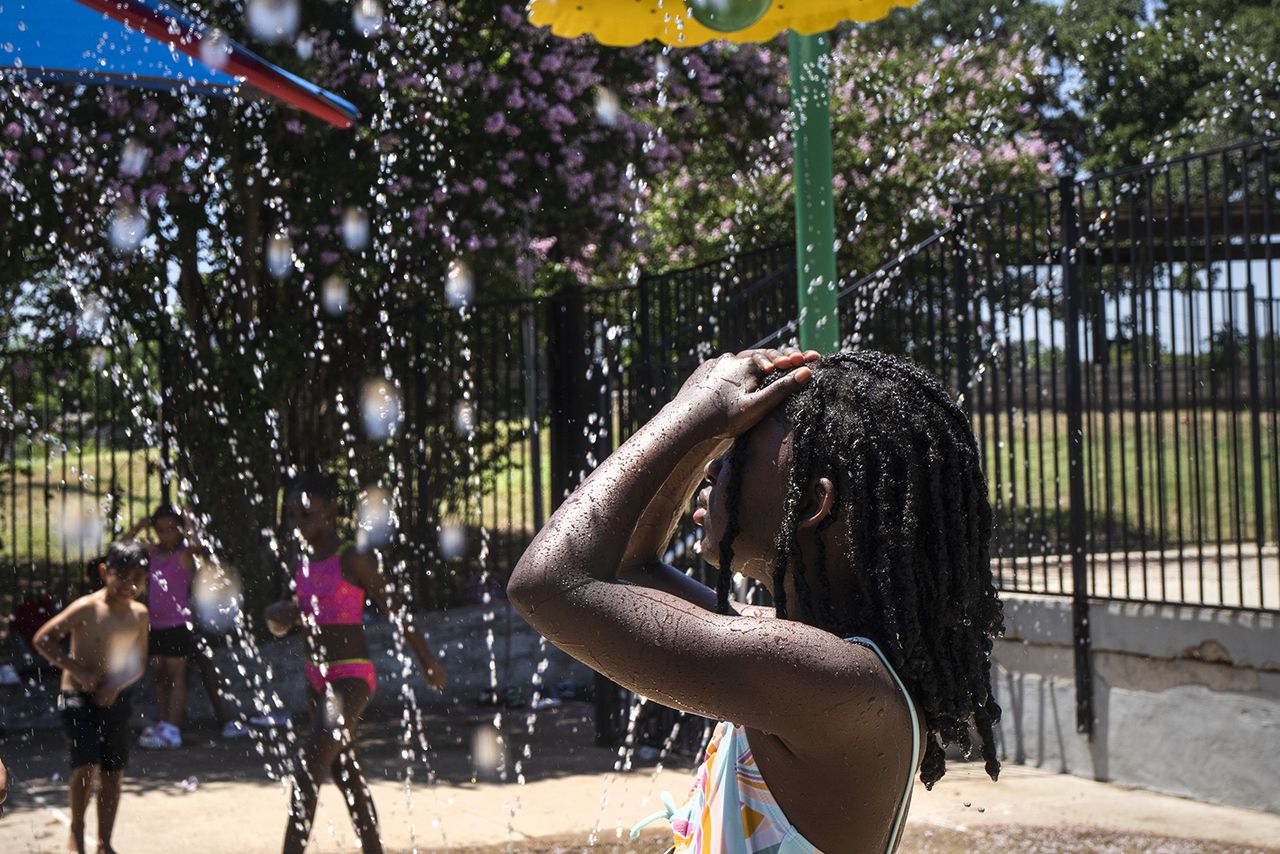Defying the Heat Dome: whoâs at risk and ways to beat the record-breaking heatwave
Extreme heat is the most dangerous and deadly of all the wild weather the country endures, despite the destructive power of tornadoes, hurricanes, and mass floods.
And that heat is all around us right now.
Over the last week, large swathes of the country — stretching from California to North Carolina and the southern tip of Texas to North Dakota’s border with Canada — have experienced exceptionally high temperatures. This current period of extreme heat is described as a heat dome, which is when hot ocean air is trapped over a particular region by a figurative dome or cap. In reality, it’s a high-pressure system that keeps the heat in place.
The hottest areas are in the Southeast, Southwest, and Midwest.
Texas has experienced the worst of it, with temperatures in the Rio Grande Village hitting 119 degrees on Friday, placing a record-high strain on the state’s electrical grid and putting tens of millions of people at risk of heat-related illness and death.
So bad has extreme heat become in recent years that the federal government released a new website that helps citizens track the hottest days and find the best ways to deal with them. On Wednesday, the Heat.Gov website noted that over 100 million Americans are under extreme heat alerts.
Unlike other types of intense weather where you can physically see the danger and destruction, heat is more likely to creep up slowly on people before they can find relief. On Friday, a teenage boy and his stepfather died in Big Bend National Park as temperatures neared 120 degrees Fahrenheit.
Those types of extreme heat can be deadly for many people, many of whom work outside or suffer from a chronic illness.
Outdoor Workers: Occupations such as construction workers, agricultural laborers, utility workers, and landscapers spend prolonged periods outdoors, making them susceptible to heat-related illnesses. In Texas, where some of the highest temperatures have been seen recently, Gov. Greg Abbott recently signed a bill that eliminates water breaks for construction workers.
Elderly Individuals: Older adults often have reduced heat tolerance and may have underlying health conditions that make them more susceptible to heat stress and dehydration. This can be particularly problematic in regions where the electrical grid fails.
Children: Young children are more prone to heat-related illnesses because their bodies do not regulate temperature as effectively as adults. They may also be less aware of the need to stay hydrated or take breaks from physical activity.
Individuals with Chronic Illnesses: People with chronic medical conditions, including heart disease, respiratory conditions, and diabetes, have a higher risk of complications when exposed to extreme heat.
Unhoused Individuals: Those experiencing homelessness often lack access to air-conditioned shelters and may not have the means to escape extreme heat. They face increased risk due to prolonged exposure and limited resources. Studies have shown that resting in areas with tree canopies can reduce heat by as much as 10 degrees.
Emergency and Disaster Workers: Firefighters, emergency medical technicians, and disaster response personnel frequently work in challenging environments, including extreme heat situations. Many have no choice but to respond to emergencies regardless of the weather outside.
People in Urban Areas: Urban areas tend to experience the “urban heat island effect,” where the concentration of buildings, concrete, and asphalt traps heat, leading to higher temperatures. This can disproportionately impact individuals living in densely populated cities, particularly those living in areas with few trees. Studies have shown that lack of tree coverage is linked to class and race.
People who are incarcerated: People who are incarcerated in correctional facilities can be significantly affected by extreme heat. Prisons and jails often face challenges in maintaining comfortable and safe conditions during extreme temperatures. For example, 70% of jails and prisons do not have air conditioning in Texas. That can lead to a 20% increase in extreme violence in hot months.
So, what can you do about extreme heat? Here are some ways to keep yourself and loved ones safe.
Stay Hydrated: Drink plenty of water throughout the day, even if you don’t feel thirsty. Avoid alcohol, caffeinated beverages, and sugary drinks, as they can contribute to dehydration. Remember to carry a water bottle with you when you’re outdoors.
Stay Cool: Seek air-conditioned environments as much as possible, such as shopping malls, libraries, or community centers. If you don’t have access to air conditioning, use fans, take cool showers or baths, or use damp towels to cool down. Dress in lightweight, loose-fitting clothing made of breathable fabrics.
Limit Outdoor Activities: Minimize outdoor activities, especially during the hottest parts of the day, typically from late morning to early evening. If you must be outside, seek shade, wear a wide-brimmed hat, and apply sunscreen to protect yourself from the sun’s harmful rays.
Check on Vulnerable Individuals: Keep an eye on elderly individuals, young children, or those with chronic illnesses who may be more susceptible to heat-related illnesses. Ensure they have access to a cool environment and are staying hydrated.
Be Aware of Warning Signs: Learn to recognize the signs of heat exhaustion and heatstroke. Symptoms of heat exhaustion include heavy sweating, weakness, dizziness, nausea, headache, and muscle cramps. Heatstroke is more severe and may involve a high body temperature, hot and dry skin, confusion, rapid heartbeat, and even loss of consciousness. If you or someone else experiences these symptoms, seek medical assistance immediately.
